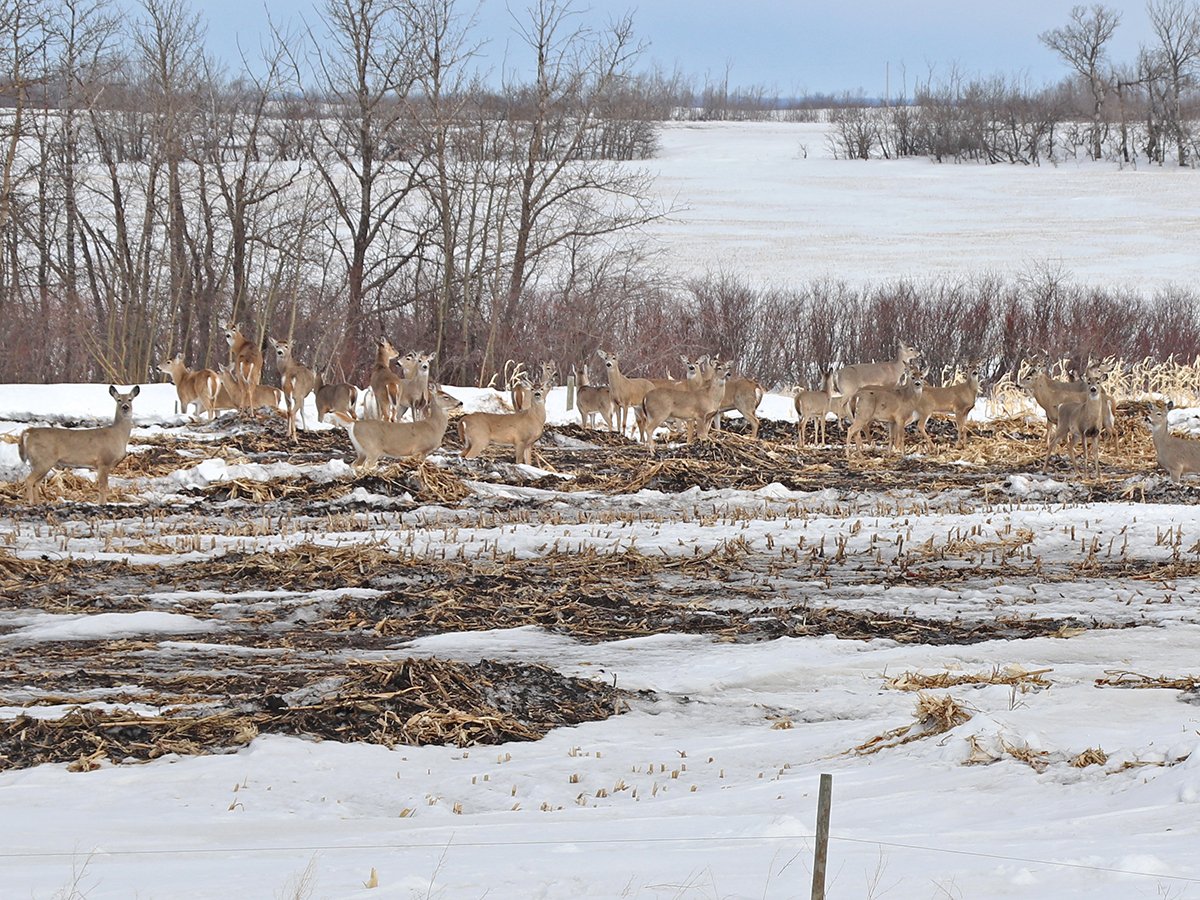Today’s easy calving herds mean we seldom experience problems.
However, a full breech birth will almost always require intervention and the assistance of a veterinarian.
This is when the calf presents tail first with both back legs pointing forward under its body. A lot of producers refer to a straight backward calf as a breech, which is a misnomer.
The true full breech has both back legs forward, pointing toward the calf’s head. The first thing you feel when exploring the cow’s vagina is the calf’s tail, rectum or the back side of the hind legs. In smaller calves, the tail may even be visible outside the vulval lips.
Read Also

Foot-and-mouth disease planning must account for wildlife
Our country’s classification as FMD-free by the World Organization for Animal Health has significant and important implications for accessing foreign markets.
I have seen large cows give birth to a full breech calf, but the labour is long and invariably the calf is dead.
One should be mindful of cows that normally calve easily but nothing is presented in 1 1/2 hours. It’s a good indication that something is wrong and a breech calving or torsed uterus would be tops on my list of things to expect.
Cows that have had twins in previous years should be watched.
They have a propensity to twin again, and the most common position for twins is one backward and one forward, which makes a breech birth a greater possibility.
In a breech calving, the cow’s water bag often has not broken because the cow can’t get enough of the calf out through the back end to break it. To assist the cow, the water bag must be broken and the position of the calf determined.
Producers may want to check if the back legs are straight forward or if they are half bent back. In other words, the hocks are partially back in the pelvis and there is essentially already partial correction before delivery. I call these presentations a partial or half breech.
These half breeches are not as jammed into the pelvis because the cow can’t push the entire blocky mass of butt and legs to the back. As a result, they may be easier to correct, and the uterus is protected because the foot is brought around to create a straight backward calving.
Breeches are the most common malpresentation for which veterinarians are called.
They can give epidurals to relax the contractions and have learned techniques to correct these tough malpresentations.
Time is of the essence because the cow usually has not gone into full labour and has not been noticed until it is almost too late.
Many of the breeches are dead before we start, and if that is the case, we may perform a fetotomy rather than risk damaging the cow. This involves cutting off both back legs and delivering the calf that way.
Veterinarians are careful when bringing the back legs around because it’s important to protect the uterus. We don’t want the underside of the hoof creating holes as it is brought around.
In some cases, we have been called out to cases where there has been excessive intervention and the uterus already has a major tear from the breech calf being pushed forward during an attempted correction.
In severe cases, the calf may be pushed right out through the tear and into the abdomen. In these cases, the uterus is often amputated once the calf is delivered be-cause the tears often extend up-ward toward the cervix.
Veterinarians use a combination of technique, equipment and know-ing when to be aggressive and when to be gentle to flex the back legs and bring them around.
Producers can sometimes correct a breech in twins or smaller calves, but they should attempt this only if they are experienced.
It’s common in twins for the first one to be backward or breech. As well, the umbilical cord may be wrapped around the leg that is being repositioned.
Sometimes it is difficult to tell if the calf is still alive. Legs that start violently thrashing may be a sign the calf is dying.
I have seen prolapsed rectums in calves because the cow is straining so much, and yet we delivered a live calf. Other times, a long dead first breech twin is followed by an alive second calf. You never know until you examine them thoroughly.














